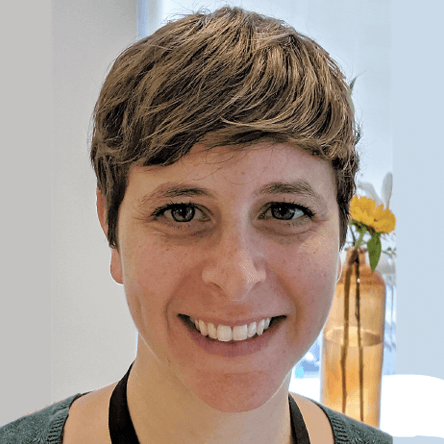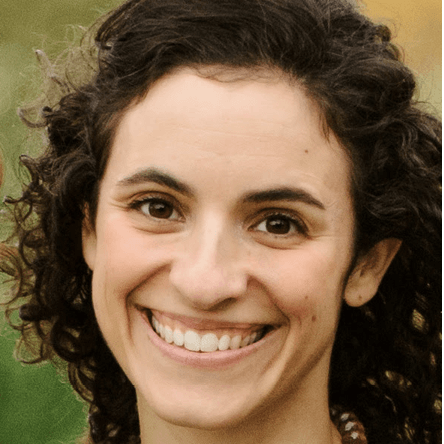School communities include multiple stakeholder groups, such as students, teachers, staff, parents, administrators, etc. Often, an individual may belong to more than one of these stakeholder groups, which can lead to a school being described as a family and a warm, caring, and friendly environment. These positive feelings draw teachers, administrators, and staff to work at a school and sometimes to even enroll their own children. As a result, teachers may end up teaching their colleagues’ children. In this paper, we present the findings of our original study which explores this phenomena. We refer to faculty with children in the school as parent-teachers. The faculty teaching these students are identified as colleague-teachers. (For a more thorough analysis of the theoretical framework of this article see here and here.)
Parent-teachers and colleague-teachers have a dual role and may experience intrapersonal or interpersonal role conflict because they need to balance the demands of two separate roles which, at times, may be “incompatible.” (Identity conflicts at work: An integrative framework) To navigate these roles, people must cross boundaries from one to the other, from parent to colleague and from colleague to teacher. Without a set of clear rules or expectations about how to navigate these relationships, individuals are left to devise their own expectations and rituals. As demonstrated in our study, this lack of clarity about the expectations and guidelines for when and how to cross boundaries can contribute to feelings of anxiety.
Charles E. Smith Jewish Day School (CESJDS) is one of the largest pluralistic Jewish day schools in North America employing 159 teachers, not including teaching assistants and aftercare providers or coaches. The School serves over 900 students from Junior Kindergarten through 12th grade. At CESJDS we pride ourselves on the number of faculty who send their children to the school and view this as recognition of the strength of our program. As part of the school’s mission to ensure “a vibrant Jewish future”, CESJDS offers employees a tuition remission program to encourage those who are raising Jewish children to choose the school for their families.
The number of people who have to navigate these relationships at CESJDS in a single year is staggering. Eighty-five percent of teachers taught a colleague’s child, 55% taught the child of an administrator on the Leadership Team, and 31 of our faculty members (19%) also belonged to the CESJDS parent community during the 2018-2019 school year. This means that 128 (81%) of faculty members in the last year either had to navigate their competing role demands as teacher and colleague or as colleague and parent. We, the authors, belong to the administrator, teacher, and parent stakeholder groups. We care deeply about maintaining professional boundaries and are cognizant of the power dynamics that exist in these situations between us and our colleagues. Therefore, we sought to find out more about our colleague’s perspectives. Given the above statistics we ask:
What happens when a teacher has a child of a colleague in their class?
What happens when a parent-teacher boundary crosses from professional to parent when interacting with a colleague?
To gather data, we emailed an anonymous open-ended survey to the CESJDS faculty to capture their perspectives on this issue. Remarkably, we received 23 responses within 48 hours over summer break when most teachers are not checking their email regularly.
The Positive Side
One positive finding which came out in the responses was the strong sense of family and community felt by the faculty due to a general feeling of investment in the school. One colleague who self-identified as a former parent-teacher reflected, “I think it is wonderful that the teachers and administrators have their children in our school. I was one of those parents and it is such a special experience. It is worth it for the school to keep promoting it and giving a discount to parents and administrators. I think that if you have or had a child at JDS you have a special love for the school that is priceless.” Another wrote, it helps “make it an even stronger community.”
Teachers who reported positive feelings (26% of respondents) stated that they felt “honored” and “excited” to teach their colleagues’ children. They talked about opportunities for positively “partnering” with administrators and other teachers around the parent-teacher’s child’s success. Positive opportunities included more frequent communication, greater access to discuss a student’s progress because their colleagues were “easily accessible”, a “shared vision and understanding” about the purpose of education at CESJDS, the teacher’s choice of instructional methods, and parent-teacher partnerships. One respondent wrote, “The strength of the relationship and the sense of on-going caring continues naturally in a way that I believe is different from families who don’t have this additional bond with the school,” while another stated, “you start the parent relationship already feeling more comfortable with them and hopefully they have a better understanding of where you are coming from when you tell them things.” These responses evidence increased trust between the two colleagues because they already developed a professional relationship prior to teaching a parent-teacher’s child.
Anxiety of Unclear Expectations
Coupled with the positive sentiments were expressions of discomfort. Five of the six respondents who reported positive feelings and four of the nine teachers who reported feeling “indifferent” about this phenomenon also acknowledged feelings of initial “intimidation,” the need for “real trust,” or the potential for anxiety or stress. Feelings of anxiety ranged from “a little uneasy” to “dread” to “paranoia.” As one person wrote, it is “a little more stressful because on some level, it feels like they have control over your employment” and worried that it could turn into a power differential that affected the employer/teacher relationship.” Another simply wrote, “It stresses the collegial relationship.” Several respondents stated that their feelings about teaching a colleague’s child depended on that person and their ability to manage their own boundaries.
Four colleagues wanted greater clarity around boundaries to assist teachers in mediating these dual roles. As one colleague wrote, “Staff should be guided to separate and maintain a careful balance” and to “respect boundaries,” while another insightfully remarked, “every person is different in the way they see a healthy positive parent-teacher relationship so I think it’s up to the teacher and colleague or administrator to figure that out. But maybe general boundaries could… be helpful.”
It seems that while some teachers have figured out how to navigate this on their own by only communicating with the student’s other parent (when available) or by utilizing only the school’s email student update system, other teachers are looking to the School to ritualize the verbal and non-verbal communication and expectations between colleagues and parent-teachers.
Boundary Crossing
Through several examples, one respondent highlighted stressful tensions that may arise because of this relationship. This colleague noted frustration with a parent-teacher who “understandably, but annoyingly, would persist in peeking into her child’s class.” Another said, “It didn’t bother me per se, but once her child spotted her… the child then lost all focus.” As a result, this respondent said that preparing for these interruptions and the ensuing “hallway conversations” with the colleague had to become part of lesson planning.
Other respondents saw both positive and negative elements to hallway conversations. One benefit was the ability to follow up quickly to check in with a parent-teacher saying, “Is everything okay with Student? He seemed exhausted today in class.” On the other hand, another faculty member wrote that they prefer to, “avoid hallway conversations about students with colleagues” because they did not deem that space appropriate.
Recommendations
What became clear from our research was the need for explicit communication related to managing these dual roles and for schools to help guide norm setting around this communication so that it is not dependent on the individual. These norms help establish boundaries which minimize anxiety while maximizing the benefits of these multiple roles and relationships, and thus improve the health and wellbeing of the school community. Based on feedback in the survey, we offer the following recommendations with the goal of promoting healthy relationships between parent-teachers and teacher-colleagues.
As a foundation, we suggest that the school work with a small group of parent-teachers and teacher-colleagues to work collaboratively to establish guidelines for communication and behavior. These might include communication protocols, developing shared language for when a parent-teacher or teacher-colleague wishes to cross a boundary, and a code of conduct for when conflicts or challenges arise. Below are four categories of questions we offer as a starting point for the discussions.
When: When do we as a school community believe it is appropriate for a parent-teacher to boundary cross into the parent role during the day? When do we as a school community think it is appropriate for a teacher-colleague to invite a parent-teacher into boundary crossing during the day? When should these conversations occur informally? When should these conversations be scheduled in advance?
Where: Where should these conversations take place? Is it okay for a teacher-colleague to stop by a parent-teacher’s classroom/office or to stop a parent-teacher in the hallway and begin a conversation about the parent-teacher’s child? Is it appropriate for a parent-teacher to stop by a colleague-teacher’s office or to stop a colleague-teacher in the hallway to ask a question related to the parent-teacher’s child?
How: How should we communicate when we are boundary crossing and therefore asking others to boundary cross as well? How do we stop someone from boundary crossing when we feel it is uncomfortable?
What: What language feels most appropriate in our school to help our colleagues transition from colleague to teacher-of-my-child or from colleague to parent-of-my-student? What rituals might help colleagues enter into a conversation where they need to boundary cross? What norms and expectations do we want to set as a school community? What information related to the class and student behavior is okay to include in the conversation?
After setting these guidelines and expectations, the School should train parent-teachers and teacher-colleagues at the beginning of each school year to equip them to implement this protocol and give them a safe-space to explore and reflect on their experiences in their dual-roles. Training sessions should focus on understanding and clarity of expectations related to communication and conflict resolution.
In conclusion, parent-teachers can help make a Jewish day school feel warm, caring, and like a family, but may also contribute to faculty members feeling stressed or anxious. Clear expectations, developed by representatives of the various stakeholders, can help to maximize the positive and reduce the negative. We also point out that this study did not delve into power dynamics between teachers and their direct supervisors or administrators nor did it ask parent-teachers specifically for their perspectives about how they navigate this dual role with their colleagues and with their children in the school. We encourage others to explore this as well.

by Eliana Lipsky
Middle School Principal at Charles E. Smith Jewish Day School
Dr. Eliana Lipsky is the Middle School Principal at Charles E. Smith Jewish Day School. Prior to this, Eliana taught Social Studies and Tanakh at Boston’s Jewish Community Day School. Through REACH, Resources for Education Collaboration and Health, Eliana coached teachers in, and consulted for, several Jewish Day Schools while she pursued her EdD from Loyola University Chicago.

by Orna Siegel
Director of Enrollment and Tuition Assistance at Charles E. Smith Jewish Day School
Orna Siegel is the Director of Enrollment and Tuition Assistance at Charles E. Smith Jewish Day School. As an innovative educator for the past 20 years, she has served as the Director of Admission at Boston’s Jewish Community Day School and Gann Academy. She received Hebrew College’s prize for Outstanding Achievement in Jewish Education while pursuing her Master’s in Education as a Legacy Heritage Fellow.




It must also be weird for the kid to have their parents or their friends teach them.